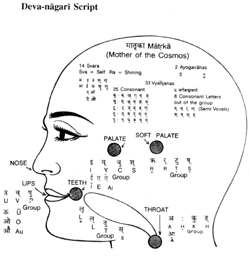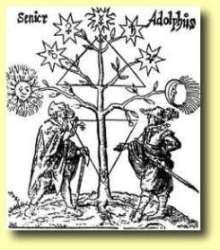Tantra
RAYA YOGA – The Royal Yoga
>Â RAYA YOGA, the Royal Yoga <
> Raya Yoga, der köngliche Yoga <
Der Ausdruck Raja Yoga stammt aus der Hatha Yoga Pradipika. Dort heißt es: âWir üben Hatha Yoga, um Raja Yoga zu erlangen.“ Denn es ist sehr schwer, nur durch geistig-psychologische Techniken Kontrolle über den Geist zu bekommen. Asanas und Pranayama können uns dabei helfen. So haben eigentlich die Hatha Yoga-Schriften den Ausdruck Raja Yoga für die Sutras von Patanjali populär gemacht. Raja heißt wörtlich âHerrscher“; durch Raja Yoga werden wir zum Herrscher über unseren Geist und unser Leben.
Das Raja-Yoga besteht in der direkten Vereinigung von Manas (also wörtlich übersetzt der Seele) mit Atma. Mit anderen Wort in der Vereinigung des Einzelbewusstseins mit dem Allbewusstsein.
Es ist begreiflich, dass durch das Aufgeben der Individualität der somnambule Zustand (Samadhi) eintritt, aber ist auch klar, dass dieser Weg der schwierigste ist. Nachdem aber das Samadhi seine Unterabteilungen hat, von denen die hauptsächlichsten Samprajnata, d.h. bewusstes und Asamprajnata Samadhi d.h. unter Aufhörung des Bewusstseins sind, so ist es, nach unserer Ansicht klar, das Raja-Yoga sozusagen die Suggestion zu dem selbstinduzierten somnambulen Zustand liefert, welcher dann, da das suggerierte Objekt.
WORDS OF SRI ANANDAMAYI MA

Benares, August 12 th , 1948.
QUESTION: What are the benefits to be derived from hatha yoga, and what are its drawbacks?
SRI MA: What does âhathaâ mean? To do something by force.
âBeingâ is one thing, and âdoingâ quite another.
When there is âbeingâ, there will be the spontaneous manifestation of what is due to be manifested, owing to the prana functioning in a particular centre of the body.
On the other hand, if one practises hatha yoga merely as a physical exercise, the mind will not be transformed in the very least. By physical exercise bodily fitness is developed. One hears quite often of cases where the giving up of the practice of yogic postures and the like, has resulted in physical disorders. Just as the body grows weak from lack of adequate nourishment, so the mind has need of suitable food. When the mind receives proper sustenance, man moves towards God, whereas by catering to the body, he only increases his worldliness.
Mere gymnastics is nutrition for the body.
> Meet Ananda Ma Filmprojekt at facebook <
MARTIN BUBER: ICH UND DU

>> Ich und Du von Martin Buber (Autor) <<
>> I And Thou (Hardcover) by Martin Buber <<
Amazon.com Review:
I and Thou, Martin Buber’s classic philosophical work, is among the 20th century’s foundational documents of religious ethics. „The close association of the relation to God with the relation to one’s fellow-men … is my most essential concern,“ Buber explains in the Afterword. Before discussing that relationship, in the book’s final chapter, Buber explains at length the range and ramifications of the ways people treat one another, and the ways they bear themselves in the natural world. „One should beware altogether of understanding the conversation with God … as something that occurs merely apart from or above the everyday,“ Buber explains. „God’s address to man penetrates the events in all our lives and all the events in the world around us, everything biographical and everything historical, and turns it into instruction, into demands for you and me.“
Throughout I and Thou, Buber argues for an ethic that does not use other people (or books, or trees, or God), and does not consider them objects of one’s own personal experience.
Instead, Buber writes, we must learn to consider everything around us as „You“ speaking to „me,“ and requiring a response. Buber’s dense arguments can be rough going at times, but Walter Kaufmann’s definitive 1970 translation contains hundreds of helpful footnotes providing Buber’s own explanations of the book’s most difficult passages.
–Michael Joseph Gross —
**************************************************
-
Nonduality in Yoga/Tantra /Spirituality:Â > TAT VAM ASI – I AM THOUGH <Â Â Â
Â
HINDU, YOGA, VEDA
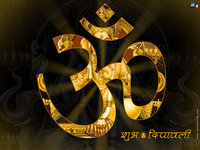
A Hindu , as per modern definition, is an adherent of the philosophies and scriptures of Hinduism, the religious, philosophical and cultural system that originated in the Indian subcontinent.
There are approximately 1 billion Hindus, making Hinduism the third largest religion in the world, of whom approximately 890 million live in India. Other countries with large Hindu populations include Nepal, South Africa, Sri Lanka, Mauritius, Fiji, Guyana, and Indonesia. Hinduism is believed to be the oldest living religious tradition in the world. Ancient or Epic India was known as Hindustan, meaning the „land of Hindus“. Hindustan continues to remain as a popular alternative name for the Republic of India.
Origins of the word Hindu
The origin of the word Hindu is still disagreed upon by historians and linguists. It is generally accepted as having originally been a Persian word for someone who lives around or beyond the Indus River, which is called Sindhu in Sanskrit, and meant any inhabitant of the Indian subcontinent, before the Partition of India. The Indus now flows the length of Pakistan and is locally referred to as „Deriya’e Sindh“. One of Pakistan’s provinces is also named Sindh.
In Persian and Arabic, the term „Hind“ denotes the Indian subcontinent, and the term Hindu (Indu or Intu in China) is still used in some languages to denote a person from the region. A variant of the word was taken into old Greek, and lost the initial aspiration (‚h‘) in modern Greek. This led to the Greek name of ‚India‘.
Alternative explanation is that the word ‚indu‘ originates from Rigveda with reference to a mythological plant juice offered for oblations, while the ‚h‘ represents auspiciousness or delight, thus implying that one who propitiates by drinking soma is a hindu.
Until about 19th century, the term Hindu implied a culture and ethnicity and not religion alone. So Hindus have adopted this term because „Hind“ (India) is their fatherland. The term some Hindus have used for their religious beliefs is Sanatan Dharma („Eternal Code“ – see also Dharma). When the British colonial government started taking a periodic census and established a unified legal system, the need arose to define what constitutes Hinduism as a religion, in order to compare it with the likes of Christianity or Islam.
Since then, various definitions have been proposed by scholars like Bal Gangadhar Tilak, who tried to define it as a religion based on the Vedas, just as the Bible and the Qur’an are the basis of Christianity and Islam, respectively. Although, even an atheist can be a Hindu.
NADA YOGA AND PHILOSOPHY
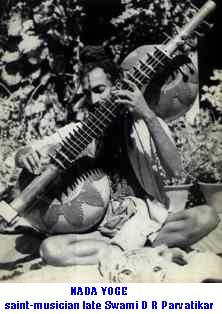
NADA YOGA AND PHILOSOPHY
Indian music has its essence in a deep sense of spirituality along with roots in Yoga and Indian philosophy. The theme of the compositions is mostly devotional in nature, and many of them also convey abstruse philosophical concepts in a form that is easy to grasp. Music itself, when practised with commitment, is also a form of Yoga. Music has a tremendous effect on the mental state of human beings as it results in peace, concentration, relaxation, spiritual elevation etc, which are the principles of Yoga and meditation. The practice of Yoga techniques, such as breath control and mental concentration, are also closely allied to the study of instrument vocal music.
According to Hindu philosophy, the word for pure sound is Nada Brahma. Nada has also been described by some as the energy of Brahma and it is believed that the propitiation of Nada leads to the attainment of Moksha (salvation), which is the ultimate goal of human life. Matanga has described Nada in his Brihaddesi thus:
 „There is no song or music without Nada, there are no musical notes without Nada, there is no dance without Nada and the world is filled with the essence of Nada“.
The word Nada refers to the physical, the mystic and the religious or the cosmic sound. The sound that is produced by musical instruments is an object of sensory perception, as it is grasped by the sense of hearing. This is called Ahata Nada. In this context, the human voice is also a musical instrument. As described by Dr Acharya Trigunateet Jaimini in the composition, Sobhillu Saptaswara, the entire body, including the abdomen (Nabhi), heart (Hrt), neck (Kantha), mouth (Rasana) and nasal passages (Nasa), aids in the production of the sound.
Distinction between Dharma and Religion
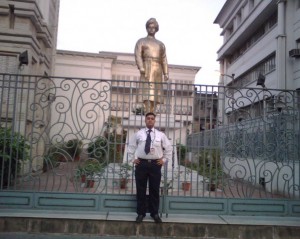
( Sanchin Gupta )
Swami Vivekananda (Bengali: সà§à¦¬à¦¾à¦®à§ বিবà§à¦à¦¾à¦¨à¦¨à§à¦¦, Shami BibekÄnondo; Hindi: सà¥à¤µà¤¾à¤®à¥ विवà¥à¤à¤¾à¤¨à¤¨à¥à¤¦, SvÄmi VivekÄnanda) (January 12, 1863âJuly 4, 1902), born Narendranath Dutta is the chief disciple of the 19th century mystic Ramakrishna and the founder of Ramakrishna Mission. He is considered a key figure in the introduction of Vedanta and Yoga in Europe and America and is also credited with raising interfaith awareness, bringing Hinduism to the status of a world religion during the end of the 19th Century. Vivekananda is considered to be a major force in the revival of Hinduism in modern India. He is best known for his inspiring speech beginning with „sisters and brothers of America“, through which he introduced Hinduism at the Parliament of the World’s Religions at Chicago in 1893.
He conducted several public and private lectures, disseminating Vedanta, Yoga and Hinduism in America, England and few other countries in Europe. He also established Vedanta societies in America and England.
-
Distinction between Dharma and Religion – DAVID FRAWLEY
-
Distinction between Dharma and Religion – Vishal Agarwal (17 June 2009)
1. Religions are Proselytizing, Dharma is Self-Transformation :
Why does Religion breed fanaticism whereas Dharma does not? This is explained very succinctly by David Frawley[1]:
âPerhaps nothing more so than religion that stimulates the passions of humanity toward either higher or lower actions. This is because religion introduces absolutes into human life. Religion sets up a standard of judgment that goes beyond life and death and all the limited values of our transient existence. Such a standard can deepen our sensitivity or can breed fanaticism and bigotry, depending upon whether we use these absolutes to provide a higher standard for our own behavior or to become harsher in our criticism of those who think differently than we do. True religion directs us to the Absolute, which requires that we cleanse our minds of our limited opinions and judgments. False or imperfect religion tries to make absolute these very prejudices, opinions and limitations.
To understand religion, we must look at religion as a whole, not as a belief system but as a way of life, a system of ethical, mental and spiritual culture â what is called in the Eastern world, dharma or the guiding law of our being. Otherwise we will be unable to extract the essence of religion from its mass of conflicting beliefs. This requires that we look at our own lives as a whole, and that we examine religion as a living phenomenon, as part of our greater human potential, our inner dharma, from whatever different land or culture it may arise.
We must learn to look at religion as a way of connecting with Reality through our own consciousness, which is the view of the science of Yoga. This is the view of religion that India has given us, the land wherein human beings have spent the most time in pursuit of the sacred, not to convert others, but to realize the Truth.â
AN INTRODUCTION TO VEDIC HEALING

AN INTRODUCTION TO VEDIC HEALING
by Raja Deekshithar
www.rajadeekshithar.com
The Vedas are not only meant for the performance of rituals, and are not only the property of Hindus. They offer great wisdom and knowledge to all of humanity. These can be employed towards the promotion of health and prosperity, and for longevity and sound and peaceful mind for all.
Here we have to ask ourselves, what IS healing? That is, what is ill health, what is good health, and what is the process from the first to the second. I can say, from my spiritual vision, and my masters‘ teaching, that ill health, whether physical or mental, is essentially the occurrence of a gap, or an imbalance, in one’s being. And healing, the process or act of filling this gap or imbalance with the appropriate energy or substance, bringing wholeness. In accordance of the nature of this gap. It is actually part of the nature of our physical embodiment that an imbalance occurs as soon as we are born on this earth.
Thus healing is something nature can do for us, or we can do ourselves. But from the earliest stages of the evolution of humanity some individuals, through vision, training and commitment, have dedicated their lives to help their fellow human beings along the path to healing, which is literally, wholeness. It is the aim of the healer to identify the nature of the gap, as well as to decide on the appropriate energy or substance to fill it with.
Patanjali International Yoga Foundation®
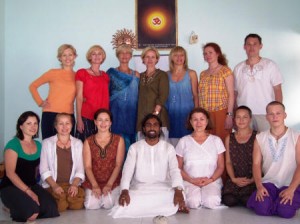
 > Patanjali International Yoga Foundation <Â
„The Basic Principle of our foundation-Truth to the Original Source. We follow the Ancient Yoga Style taken from Sanskrit books“
Mantra of sage Patanjali:
- yogena chittasya padena vacham malam sarirasya cha vaidyakena | yopakaroti tam pravaram muninam patanjalim pranajaliranato’smi ||
- Let us bow the noblest of sages Patanjali, who gave Yoga for serenity of the mind, Sanskrit grammar for purity of speech and Ayurvedic medicine for the perfection of health.
The system of Patanjali Yoga is loyal to the original source taken from the Ancient Sanskrit books.
Yoga Style includes: physical asana, pranayama, bandha, mudra, kriya, chakra and various meditation techniques, as described in the ancient scriptures of the sage Patanjali…
The training program includes Yoga Teachers Training Course (YTTC) 200/500hrs, Yoga-Ayurveda Therapy Course (YATC) 200hrs, intensive one month course, seminars, workshops and retreats. Participation and meeting the course requirements entitles the student with certificate recognized and registered with state government of India.
{„YTTC and YATC“ both courses are suitable for all level of serious yoga students. These courses are not only for teacher or who wants to be a yoga teacher but also suitable for those students who wants to experience of yoga practice, yoga retreats, yoga benefits, health through yoga, correct learning and deep information about yoga.}
Â
On the Yoga and Mantra Siddhi
 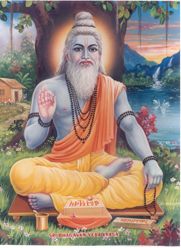
* Veda Vyasa *
>> The S’rîmad Devî Bhâgawatam <<
Translated by Swami Vijñanananda
 >> Devi-Bhagavata Purana <<Â
(Sanskrit, n., दà¥à¤µà¥ à¤à¤¾à¤à¤µà¤¤à¤ªà¥à¤°à¤¾à¤£, DevÄ« BhÄgavatapurÄna, „the old book of the Goddess“), also known as Shrimad Devi Bhagvatam or Devi Bhagavatam, is one of the most important work in Shaktism, the veneration in Hinduism of the divine feminine, next to Devi Mahatmya.
1. Himâlayâ said :– „O Mahes’varî! Now tell me the Yoga with all its Amgas (limbs) giving the knowledge of the Supreme Consciousness so that, I may realize my Self, when I practice according to those instructions.
2-10. S’rî Devî said :– „The Yoga does not exist in the Heavens; nor does it exist on earth or in the nether regions (Pâtâla). Those who are skilled in the Yogas say that the realization of the identity between the Jivâtma and the Paramâtmâ is „Yoga.“
O Sinless One! The enemies to this Yoga are six; and they are lust, anger, greed, ignorance, vanity and jealousy. The Yogis attain the Yoga when they become able to destroy these six enemies by practicing the accompaniments to Yoga. Yama, Niyama, Ãsana, Prânâyâma, Pratyâhâra, Dhâranâ, Dhyâna, and Samâdhi, these are the eight limbs of Yoga. Yama includes Ahimsâ (non-injuring; non- killing); truthfulness; Asteyam (non-stealing by mind or deed); Brahmacharya (continence); Dayâ (mercy to all beings); Uprightness; forgiveness, steadiness; eating frugally, restrictedly and cleanliness (external and internal). These are ten in number. Niyama includes also ten qualities :– (1) Tapasyâ (austerities and penances); (2) contentment; (3) Ãstikya (faith in the God and the Vedas, Devas, Dharma and Adharma); (4) Charity (in good causes); worship of God; hearing the Siddhântas (established sayings) of the Vedas; Hrî or modesty (not to do any irreligious or blameable acts); S’raddhâ (faith to go do good works that are sanctioned); (9) Japam (uttering silently the mantrams, Gâyatrîs or sayings of Purânas) and (10) Homam (offering oblations daily to the Sacred Fire). There are five kinds of Asanas (Postures) that are commendable: Padmâsan, Svastikâsan, Bhadrâsan, Vajrâsan and Vîrâsan. Padmâsan consists in crossing the legs and placing the feet on the opposite thighs (the right foot on the left thigh and the left foot on the right thigh) and catching by the right hand brought round the back, the toes of the right foot and catching by the left hand brought round the back the toes of the left foot; sitting then straight and with ease. This is recommended by the Yogis (and by this one can raise oneself in the air).
TANTRA & VEDA: One Tradition
Â
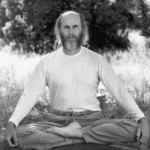
Vedic Light and Tantric Energy Yogas
By David Frawley
Tantra and Veda: One Tradition
A number of writers and teachers, particularly in Western academia, have tried to divide the two great traditions of India of Veda and Tantra as different or even contrary. Some Yoga teachers have uncritically taken up this view as well. They see the Vedic tradition as Aryan and patriarchal and the Tantric tradition as non-Aryan and matriarchal. They identify the Vedic tradition with invading Aryans and the Tantric tradition with indigenous Dravidians. They see the Tantric as worshipping the Mother Goddess and the Vedic as rejecting her. They imply that Vedic and Tantric ideas and practices are very different.
Now that the Aryan Invasion theory is severely in question, and the Sarasvati River of Vedic fame, discovered as the main homeland of civilization in ancient India, we should reexamine these views. In my own more than thirty years of studying Vedic and Tantric texts in the original Sanskrit, I have also found remarkable connections between the two traditions.
Vedic and Tantric traditions are one, though with different orientations. The Vedic tradition is an earlier form of the Tantric, which itself is a later development of Vedic practices. Tantric teachings abound in the use of Vedic mantras and the mysticism of the Sanskrit alphabet. They use Vedic fire altars and practices and honor Vedic deities at an inner level. Inner Tantric Yoga reflects the four main Vedic deities of Agni, Soma, Vayu and Surya (the forces of fire, moon, wind and sun).
Moderne Physik – Klang & Schwingung
SPRACHE KLANG & SCHWINGUNG
         >> THE MYTH OF QUANTUM CONSCIOUNESS <<
Â
Nicht nur in der modernen Physik, bzw. neuesten naturwissenschaftlichen Erkenntnissen hat Masse keine materielle Substanz mehr, und man ist daher nicht mehr der Ansicht, dass Teilchen aus irgendeinem Grundstoff bestehen, sondern sie sind Energiebündel… diese dynamischen Strukturen oder Energiebündel bilden die stabilen nuklearen, atomaren und molekularen Strukturen, die die Materie aufbauen und ihr den Anschein geben, als bestünde sie aus einer festen materiellen Substanz. Doch gehen wir zurück zur Auffassung der Tantras hinsichtlich dieses Themas:
Gorakshanath the Originar of Hatha-Yoga
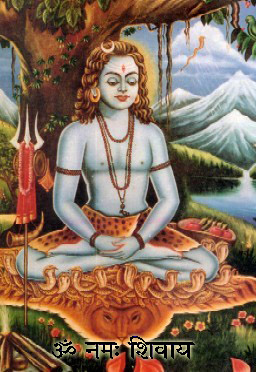
Gorakhnath or Gorakshanatha Saivism is also known as Siddha Siddhanta and Nath tradition. It was founded by Gorakshanatha (Gorakhnath) who lived about 10th century AD. He is believed to be 3rd, 4th or 5th in a line of 12 prominent teachers of this tradition, which has followers in both Buddhism and Hinduism.
He was said to be a disciple of Matsyendranatha who was from in Nepal. Followers of this tradition believe that knowledge of this tradition was received by Matsyendranath directly from Siva himself. Gorakshanatha is credited with such works as Siddha Siddhanta Paddhathi and Viveka Martanda. He composed them in Hindi. He also created 12 monastic orders across Northern India in an effort to preserve the Adinatha tradition.
Other important works of this tradition are Hatha Yoga Pradipika, Gheranda Samhita, Siva Samhita and Jnanamrita.
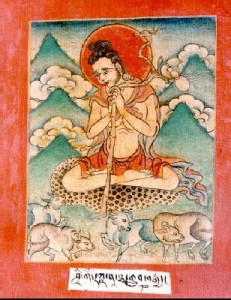
Also known as Gorakhnath – regarded as the originator of hatha yoga!
The school was predominantly ascetic and adapted many practices of the Pasupatha tradition and the Adinatha Tradition in contrast to the Nandinatha tradition followed in the south. Although it is a tantric tradition, it differs from many left-handed (vamachara) schools of tantra with its uncompromising emphasis on the practice of brahmacharya or celibacy and its stand against the use of sexual energy in yogic practices. In the past this tradition enjoyed some Muslim following in the northern India and some of them even became heads of monasteries.
The Gorakshanatha tradition brought to light many secrets of hatha yoga, kundalini yoga and samadhi and contributed to their present day popularity. Members of this tradition also dabble in occult sciences and siddhis or super natural powers.
Followers of this tradition believe that it would be possible through yogic practices to prolong human life and become immortal in the physical body (kayasiddhi). They believe that through the practice of hathayoga it is possible to channel breath energy through a web of nerves or nadis and acquire occult powers as well as achieve liberation. No one knows for sure what these practices are except those who have been initiated into them. Some followers of this tradition claim to have seen or interacted with beings who are several hundreds of years old. There are claims that Gorakshanatha, the original founder of the school, is still alive and active in our earth plane but does not appear in public.
Followers of the tradition believe that Siva is the material and efficient cause of creation and that after liberation the jivas would return to Siva, like bubbles in water. Oneness with Siva can be experienced by serious practitioners of yoga in a deep state of samadhi. Once the state of samadhi is reached, an individual would remain forever established in transcendental consciousness even while engaged in the mundane affairs of the outside world.
The tradition is still active in many parts of India and abroad and its followers range from mendicants and street magicians to the most obscure ascetics living in the Himalayas.
The popularity of hatha yoga, pranayama, kundalini yoga, holistic medicine, astrology and ayurveda in the modern world can be attributed to a great extent to this tradition.
The International Nath Order is draws its inspiration from the ancient Natha tradition, although it strives to propagate its teachings mostly outside India.
It was founded in 1978 by Guru Mahendranath in order to share the knowledge of his own spiritual awakening and also the wisdom of the ancient tantric schools of Hinduism and Buddhism.
The Hamsa Gayatri (The Sacred Swan)
![MPj04330550000[1] MPj04330550000[1]](http://www.deinayurveda.net/wordpress/wp-content/uploads/2009/09/MPj0433055000011-300x199.jpg)
The Hamsa Gayatri (The Sacred Swan)
By Yogi Baba Prem Tom Beal Veda Visharada, CYI, C.ay, C.va.
Of the numerous Gayatri mantras that are known, one of my favorites is the Hamsa Gayatri mantra. It is longer than most one or two word mantras for beginners, but short enough for most people to easily learn and chant.Â
The mantra to the sacred swan is a mantra for uplifting consciousness. As hamsa literally means âswanâ, it represents purity, but this is also symbolic for the soul. The soul, our true essence, is synonymous with the swan. The swan, or soul, in its highest state requires a different term to more clearly define it–paramahamsa, or the supreme swan is the yogic term commonly used. Parama comes from the root para–meaning higher, elevated or highest. It also means final, last and more than. Parama, itself, means most distant, highest, primary and most prominent. Therefore, paramahamsa literally means supreme swan.
YOGALEHRER IM HINDUISMUS
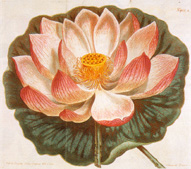
YOGALEHRER IN INDIEN
oder: “ YOGI in INDIEN „
Mit insgesamt 390 Versen stellt die Yoga-Shikha („Krone des Yoga“)-Upanishad die umfassendste Yoga-Upanishad dar. Sie besteht aus sechs Kapiteln, deren letztes einmal eine selbstständige Abhandlung gewesen zu sein scheint. Dieses > Shaiva-Werk < soll, ähnlich wie die > TANTRAS <, den spirituellen Suchern dienen, die mit den Schwierigkeiten des dunklen Zeitalters (kali-yuga) zu kämpfen haben.
Tantra & Landwirtschaft, Tantra in Agriculture
* Internationales Jahr der Astronomie 2009 *
>Immerwährender Bauernkalender< > Los & Schwendttage <
COSMOVISIONS IN HEALTH AND AGRICULTURE IN INDIA
Prabha Mahale and Hay Sore
There are two major cosmovision traditions in India. The âGreat Tradition‘, which represents the Sanskrit or classical tradition described in the Vedas and the âFolk Tradition‘, representing popular Hindu tradition and the tradition of the tribal peoples.
The rituals and practices of the Hindu tradition, both classical and folk, is a continuing history. They both represent a living cult that is deeply ingrained in social, religious and cultural traditions, both in the orthodox and the popular sense. Generally they converge, occasionally they diverge. There is also the indigenous system of the original inhabitants, the tribal people who have another history and knowledge base.
The Vedas are a collection of hymns, mantras and prayers written in Sanskrit, that communicate the sacred knowledge of the cosmic order visioned by the rishis or seers.
Thus, rishis are exalted beings who manifest divine wisdom and include the visionary sages of ancient India to whom the Vedas were intuitively revealed.
A rishi or seer has a perfectly subjective and objective mind, because it is free from the six prejudices: lust,anger, greed, intoxication, delusion, jealousy. Because of this he is able to make full use of the five senses and his mental capacity.
The senses naturally move out to see, hear, touch, smell and taste, where as the mind can move outward with the senses and move inward and experience an inner non-sensory world. For a seer, the way to understanding nature is to become one with it.
Vedas cover diverse branches of learning, such as astrology, medicine, law, economics, agriculture and government. The Vedic tradition is the root of cosmology and knowledge for the vastu majority of Indians, Hindus and Jains.
In India’s traditional thought, there is no distinction between the sacred and the profane: everything is sacred. The essence of this tradition is to live in partnership with, rather than to exploit nature. The most complete holistic perspective of the universe was evolved by Vedic culture about 6000 to 8000 years ago, and has been sustained by Indian civilisation throughout the millennia.
The Vedas have played a major role in bringing together mankind and faith in nature and have guided man through Rta, the cosmic morality. The cosmology, the total worldview, had the relationship between the Human and Nature as its core. All life is believed to be interrelated and interwoven.
According to Hindu mythology Brahma is the creator, Vishnu the conserver and Shiva the destroyer of the universe.
The basic theory of cosmovision is known as Siddhanta. The Sarva Tantra Siddhantas cut across all areas of traditional Indian science.
The following elements are important for health and agriculture:
· Understanding the composition of all material, animate as well as inanimate, in terms of the five primordial elements, the Pancha Mahabhutas: vayu (air), jala (water), prithvi (earth), agni (fire) and akasha (ether, sky or space).
· Understanding the properties and action of human beings, animals and plants, in terms of three biological factors: vaata, pitta and kapha. Vaata: slender, light and averse to sunlight. Pitta: medium size, abundancy and fond of sunlight. Kapha: stout and bulky, abundant flowers and fr uits, housing many creepers.
· Understanding the fundamental existential principles of dravya (matter), guna (quality) and karma (action).
· All living beings are born and evolve from the five Mahabhutas earth, water, fire, air and space.
In death they go back to them. The Mahabhutas are the primary natural resources essential for all life forms. Through myths and rituals mankind is ever reminded of his duty (dharma) to sustain these elements.
Gods and Goddesses from the Great Tradition
The cosmovision of ancient India can be illustrated by a quotation from an Ayurvedic text:
âThe basic aim of the concepts and fundamental principles of all the sciences is to establish happiness in all living beings. But a correct and thorough knowledge of the basic principles of the universe and the (human) body leads to the correct path to happiness, while deceptive knowledge leads to the wrong path.‘
The cosmic forces were personified in the form of various gods and goddesses, whose influence or failure to maintain cosmic morality was considered the main cause of an imbalance in health. They play a role in healing and thus it was the responsibility of every individual to observe the prescribed rules.
Most of the Vedic rituals are institutionalised in Hindu Dharma and are a part of the day-to-day life of the people.
Varuna is the God of waters and all the rivers. Ganga, Yamuna, Saraswati and Kaveri are deities of the vast water cosmogony. No ceremony of birth, death or marriage is complete without the ritual purification of water. Vegetative and animal life forms such as lotus, coconut, mango, snake, tiger and cow are central in Hindu myths. Cows, which are a symbolical representation of the earth, have traditionally been objects of great worship and reverence. The killing of the cow is listed as one of the major sins in Hinduism: âAll that kill, eat and permit the slaughter of the cow will rot in hell for as
many years as there were hairs on the body of the cow.‘ [Artha Shastra of Kautilya].
The teachings in ancient scripts such as the Upanishads, emphasise the importance of trees. Reverence for trees is expressed in the various tree worships related to the Ficus species. Trees have also been linked with penance, education and religious activities.
Prithvi, the Mother Earth, is the divine mother who sustains plant and animal life. She is perceived to be a powerful Goddess for the world as a whole.
The cosmos itself is seen as a great being, a cosmic organism. Different parts of the world are identified as parts of her body. The earth is called her loins, the oceans her bowels, the mountains her
bones, the rivers her veins, the trees her body hair, the Sun and Moon her eyes and the lower worlds her hips, legs and feet. Vayu (air) in the Vedic pantheon is associated with Indra, the God of the firmament, the personified atmosphere.
He is prana, the pure breath of life. Finally the sun, the great ball of fire is the energiser, the life giver.
The Goddesses too illustrate important ideas in Hindu philosophy. For example, Prakriti denotes physical reality. It is nature in all its complexity, orderliness and intensity. The Goddess Sri, or Lakshmi, is today one of the most popular and widely venerated deities.
In early Vedic literature she was invoked to bring prosperity and abundance. In the Sri- Sukta (an appendix to the Rig Veda dating from pre-Buddhist times) she is described as moist in cow dung. Clearly, Sri is associated with growth and the fecundity of moist, rich soil. Villagers, particularly women, worship Sri in the form of cow dung on certain occasions. Lakshmi is associated with the lotus (symbolising vegetative growth) and the elephant (whose power brings fertilising rains). Together they represent the blossoming of life. Durga is one of the most formidable Goddesses of the Hin du Pantheon. Her primary mythological function is to combat the demons who threaten the stability of the
cosmos.
Deities of villagers
In the villages, these goddesses are worshipped by upper caste Hindus. The âGreat Gods and Goddesses‘, though acknowledge d to be in charge of distant, cosmic rhythms, are only of limited interest to most village people. Every village has its own village deities.
They often share the names or epithets of deities in the Sanskrit pantheon but they do not necessarily have any similarity with âthe Great Tradition‘ Goddesses. Unlike the âGreat Gods‘ whose worship is often restricted to certain castes, these deities are the goddesses of the whole village. All over southern India, these village deities are almost exclusively female. They are not usually represented by anthropomorphic images but by uncarved natural stones, trees or small shrines. The village and its immediate surroundings, therefore, represent for the villagers a more or less complete cosmos.
The central divine power impinging on, or underlying this cosmos is the village goddess. The extent to which order and fertility dominate the village cosmos is determined by the relationship between the goddess and the villagers.
Their relationship is localised and aims not so much at individual welfare but at securing the welfare of the village as a whole. In return for their worship, the goddess ensures that the villagers have good crops, timely rain, fertility and protection from diseases, spirits and untimely death.
The entire ritual complex built around agricultural operations involves protective, prohibitive and promotional values. For example, the villagers in Pachara (West Bengal) propitiate Lakshmi and Manasa a number of times each year. While Manasa is worshipped generally during the cultivation season, Lakshmi is worshipped during preharvest or post-harvest periods.
Furthermore, many of the rituals performed for living human are also being extended to Mother Earth. The Adi Perukku agricultural festival is celebrated in Tamil Nadu. On the eighteenth day of the Tamil month of Adi (between mid-July and mid-August) this festival hails the arrival of the monsoon. Reverence is paid to the River Goddess and farmers are encouraged to sow seeds.
An important aspect of this festival is the sowing of nine varieties of seeds: wheat, paddy, toordal, green gram, groundnut, bean, sesame, black gram and horse gram (Navadanya) in a pot.
It is called Mulaipari and is a forerunner of the present germination test. Apart from the festivals of the village goddess, there are a number of ritual performances that directly or indirectly relate to the various stages of managing agriculture production and consumption. These are observed by individual families and by particular caste communities. These rituals vary from region to region and from community to community.
But the ultimate goal is the same: the worship of deities,implements, bullocks, and spirits in the fields to ensure a good harvest. (Erntedankfest) http://de.wikipedia.org/wiki/Erntedankfest
Classical Indian Agricultural Science – In the Vedas, particularly Rig Veda and Atharva Veda a great deal of attention is paid to agriculture, implements, cattle and other animals, and the rains and harvests.
Ancient texts relating to agriculture are the Vrkshayurveda (Ayurveda of plants) and the Krshisastra (science of agriculture) and Mrgayurveda (animal science).
They provide a wealth of knowledge on such subjects as the collection and selection of seeds, germination, seed treatment, soil testing and preparation, methods of cultivating plants, pest control and crop protection, the rearing of cows and the care of draught cattle, for example.
Outbreaks of disease and pest attacks on plants are viewed as being based on the same principles as the epidemics that affect the human and animal species. The basic understanding is that epidemics occur because of imbalances in the ecosystem. One of the major causes of such inbalance is human error or living in the wrong way which leads to an incorrect intervention in natural processes. The main protection against epide mics is a thorough knowledge of nature which makes it possible to avoid causing serious imbalances in the ecosystem.
Vrkshayurveda – the science of plant health – was accorded a prime position in the history of agriculture in India. The three major ancie nt texts that provide the basis for Vrkshayurveda were compiled by Varahamihira, Chavundarya and Sarangadhara. These texts provide indications of an integrated approach to controlling crop pests and diseases through soil, seed, plant and environmental treatment.
These different methods have several characteristics in common and can be used to launch a multi-pronged attack on pests and diseases; to improve plant health and increase resistance; to enrich the soil with nutrients and increase useful microbial activity, and finally to ensure a broad spectrum effect on pests and diseases.
Folk knowledge – Farmers‘ perception and understanding of ecology, crops, land, labour, livestock and agricultural implements has a profound bearing on the strategy they adopt in their day to day agricultural operations.
Their ideas about climate, crops, the optimum climatic conditions required for cultivation and beliefs relating to crops and fruits are the results of the knowledge they received from their ancestors and their own long experiences in the natural laboratory of their fields. Farmers have the ability to identify various types of seeds and seedlings and this is often based on morphological characteristics. By looking at the nature of the flowers on a plant, an estimation of the yield can be made (Bauernkalender).
The technically useful items of indigenous agricultural practices are often documented without reference to the symbolic or ritual matrix in which they occur. It is a debatable point whether, by looking at these practices from a mere scientific and rational perspective does not devalue them. Despite the fact that farmers have been subject to external influences, they still continue to experiment and make innovations, sometimes adapting external knowledge to indigenous knowledge and sometimes revitalising their own knowledge.
There are indigenous institutions that regulate community administration, decisionmaking, elements of farming and the rites and rituals related to cosmovison. In the villages, religious functionaries such as Brahmin priests, and in the tribal communities of the Eastern Ghats traditional functionaries such as the Naiks and Disaris play an important role.
The functioning and strength of the institutions that kept the environment protected, depends on how successfully future citizens are introduced to the heritage that generates respect for these institutions. Knowledge systems cannot grow if traditional cultural anchors are not properly located.
Culture provides a âgrammar‘, while technology provides new words. The meaning of life can only be discovered if both are blended together.


